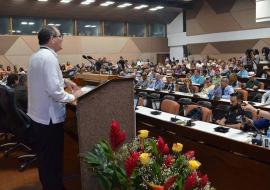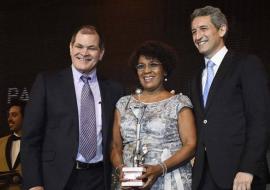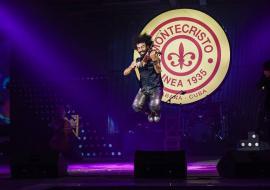The History of El Laguito Cigar Factory in Havana

When Havana was beginning to be reborn in the first two decades of the 20th century, following the U.S. intervention, the foundation of the republic and, above all, the economic bonanza brought about by World War I and the rising sugar prices, a neighborhood on the west side of town was popping up, snatching land from the sea and many vacant lots that had remained uninhabited.
In 1911, a group of Americans and Britons who had settled down in Havana, led by New York engineer Frederick Snare, bought the lots of a large farm in the area known at that time as Playa (Beach) and started building there a number of recreational farms, a clubhouse and a golf court, guzzling up to 36 hectares of land.
Quite soon, the zone began to get countless beautiful villages and estates, while the lands in the vicinity were known as El Laguito, stemming from a small pond in the middle of the lots that used to spill over in some areas during the rainy season.
First the Trust Company of Cuba and later the Country Club Parque Investment Company were tasked with the acquisition and resale the coveted buildings to the local bourgeoisie and tycoons –mostly Americans- that eventually gave birth to nearby neighborhoods like Cubanacan.
In the 1930s, the original Club founded in the early 20th century became the Havana Biltmore Yacht and Country Club, whose membership accrued as more well-heeled Cubans were joining and foreign members, especially from the U.S., began trickling in.
The Havana Biltmore Yacht and Country Club used to be so exclusive that dictator Fulgencio Batista, who had been named an honorary member in an apologetic gesture, could never walk into the main entrance for being a mulatto. Even when he visited the location for the grand opening of new works in 1953, he was forced to enter through a side door to prevent him from stepping onto the same floor the club’s most exclusive members used to stand on.
Big-time American magnates, like Ringling, DuPont, Astor and Hershey, who used to spend their vacations in Havana, utilized the club as an activity center. Many of them even started building houses in the vicinity.
In the 1920s and cashing in on the economic influx known back then as “the fat cows” –triggered by skyrocketing sugar prices during World War I- the Cuban sugar industry bourgeoisie also stormed El Laguito with the purchase of houses and vacant lots.
One of the families linked to the sugar industry was formed by Alberto Casimiro Fowler Jiménez and María de los Ángeles Cabrales Sánchez, both British citizens and natives of Cienfuegos, owners of the Narcisa sugarcane plantations in Las Villas and with shares in different sugar companies.
According to the book entitled “We’ll Call it Cohiba…”, authored by Adargelio Garrido de la Grana, the Fowlers had four children, Victoria de los Ángeles, Raúl Alberto, Ernesto Rafael and María Albertina, who used to rub elbows with the high society of the time, despite the fact that their parents’ finances were not always that good, especially during World War II.
However, the big mansion built by them atop a small knoll and across the main street that ran through the El Laguito neighborhood, hosted a number of social functions. Its simplicity and majestic character, mainly the broad staircase leading up to the front door, struck the attention of all passersby.
Following the passing of Alberto Casimiro Fowler in 1952, the family’s patriarch, the house remained empty till 1957, when the Fowlers’ heirs surrendered their property to a real-estate company just to amortize their participation as shareholders.
Nonetheless, in the middle of the struggle against dictator Batista, those were not the best of times for real-estate transactions, so the house remained closed, a reason that prompted neighbors to start calling it the “House of Mysteries”.
Shortly after the triumph of the 1959 Revolution and as the myth of Cohiba was beginning to spread out, the former mansion owned by the Fowlers became home to cigar rollers, especially women, who were hand-rolling those gems that were the gifts of choice for dignitaries and personalities from around the world.
A place of pilgrimage for every habano lover, the El Laguito Cigar Factory is no longer the “house of mysteries” it was known in the past.
The looks of the house have also changed with the addition of new locales in a bid to enhance the cigar-rolling workshops, to install cold stores and spots to manage the dampening of the tobacco leaves, as well as to make room for vacuum-fumigation.
All this, coupled with the mastery and experience passed on from generation to generation of cigar rollers, both men and women, have contributed to make Cohiba, after fifty years since its foundation, the most exclusive brand –and the most innovative too- in Habanos S.A.’s portfolio.










